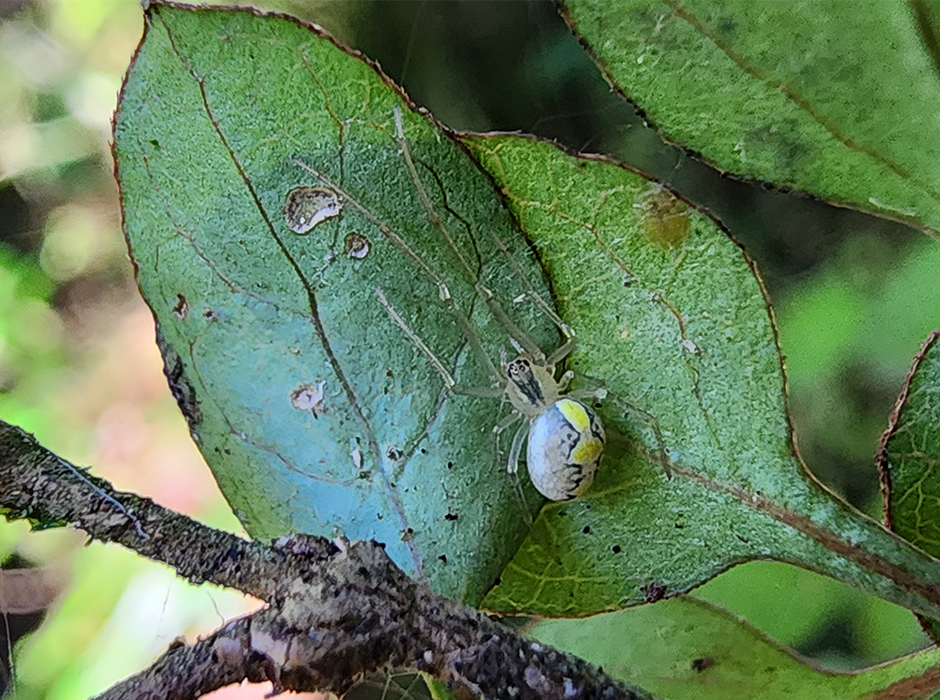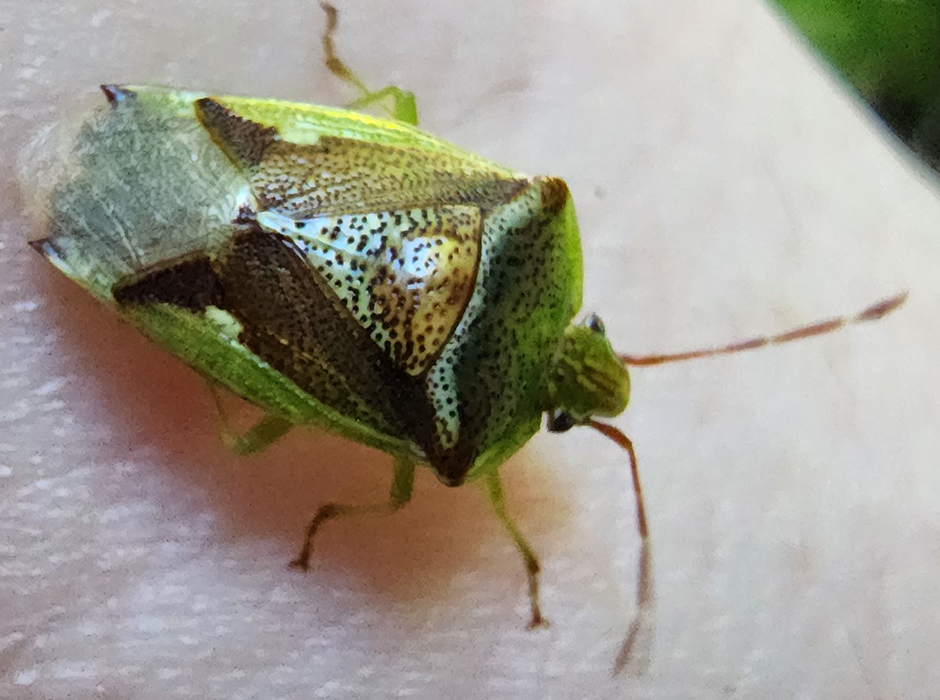
A Theridiid, also known as the tangle-web spider, was spotted on a Coprosma plant. It is often found near forest vegetation and in mistletoes on agricultural land. The undescribed species is endemic to New Zealand. Photo credit: James Crofts-Bennett.
Researchers are calling for native leafy mistletoes to be protected, as they are a haven for invertebrates in winter.

James Crofts-Bennett
A study led by the University of Otago – Ōtākou Whakaihu Waka found native mistletoes on introduced deciduous trees acts as an invertebrate refuge during the colder months because they are evergreen.
Lead author James Crofts-Bennett, a PhD candidate in the Department of Botany, says native invertebrates, like arthropods, are more likely to survive in urban and suburban habitats if mistletoe is present.
“Arthropods – which include hexapods, chelicerates, crustaceans and myriapods – make up the vast majority of animal species. Heck, all species in general," Mr Crofts-Bennett says.
“They provide a vast array of ecosystem functions and are crucial to maintaining the world as a whole. The classic example is bee pollination, but moths, flies, beetles and even some arachnids can be important pollinators. Likewise, Oribatid mites are crucial to forest soil cycling, similar to earthworms in agricultural systems.
“All these animals were found in mistletoes we examined.”
Mistletoes are semi-parasitic plants found throughout New Zealand.
Recently published in the journal New Zealand Entomologist, researchers collected foliage samples of 19 host trees and 19 mistletoes living on them from a mix of rural and suburban areas in summer and winter in the greater Dunedin area.

Oncacontias vittatus is an endemic forest shield bug. It was found on mistletoes on agricultural land. Photo credit: James Crofts-Bennett.
Co-author Associate Professor Janice Lord, also of the Department of Botany, says Dunedin is home to six species, including the leafy green mistletoe Ileostylus micranthus, the focus of this study, and the endangered white mistletoe Tupeia antarctica.

Associate Professor Janice Lord
Summer samples harboured 1335 arthropods with no overall differences between mistletoes and their hosts, whereas winter samples had 60 arthropods mainly found on mistletoes.
However, Mr Crofts-Bennett says leafy mistletoes like Tupeia and Ileostylus suffer persecution because they are perceived to be harmful to host trees, but in fact provide poorly understood ecoservices.
“Perhaps we could move away from the gardeners’ attitude of absolute control and look more to Tāne Mahuta’s example,” he says.
“When Tāne made the forests he made the mistletoe last. He saw his youngest child was small and weak, so he lifted the mistletoe from the forest floor and placed them in the arms of their larger siblings.
“Not a tale of parasitism and unchecked human ego, rather a tale of functional ecosystem components and how they interact to provide for the forest as a whole.”
Publication details:
Are evergreen mistletoes on deciduous hosts arthropod winter refugia?
James Crofts-Bennett and Janice Lord
New Zealand Entomologist